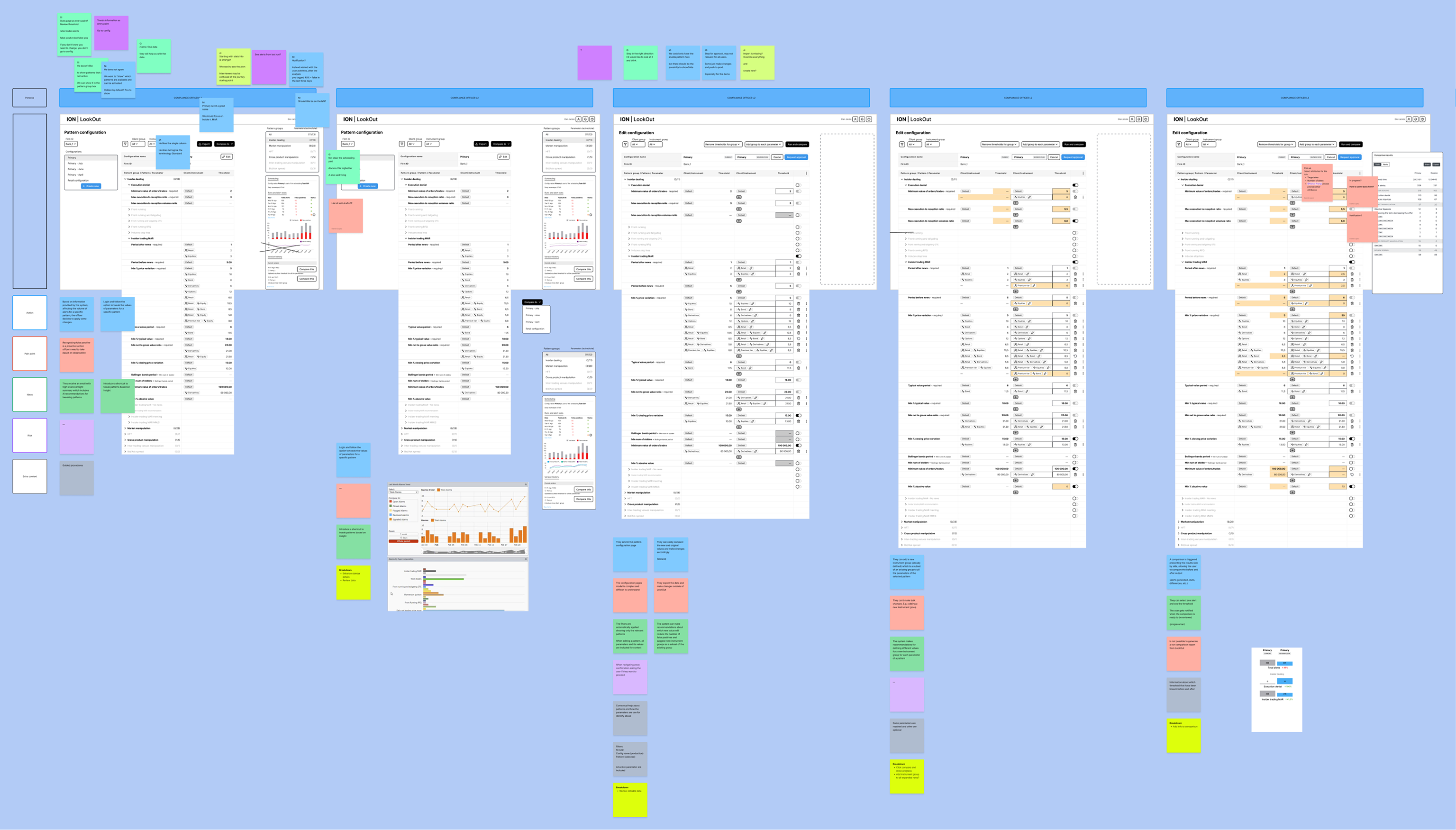Case Study:
Creating a Concept Design that Inspires Strategic Innovation and Unlocks Product Potential
Mar 2023–Aug 2023 UX architect User Research Prototyping
LookOut is a leading trade surveillance solution for regulatory compliance, designed to help officers monitor potential market abuses. While the software is highly regarded for its capabilities, its suboptimal user experience frustrated compliance officers during onboarding and daily operations, causing them to spend more time navigating the tool than on their core responsibilities.
To unlock the full potential of this software, we were commissioned to deliver a concept design with improved user experience that would inspire strategic product innovation.
In order to comply with a non-disclosure agreement, I have omitted confidential information in this case study. The content presented is based on information available to the public and does not reveal any confidential procedures.


Market Surveillance Wireframes



